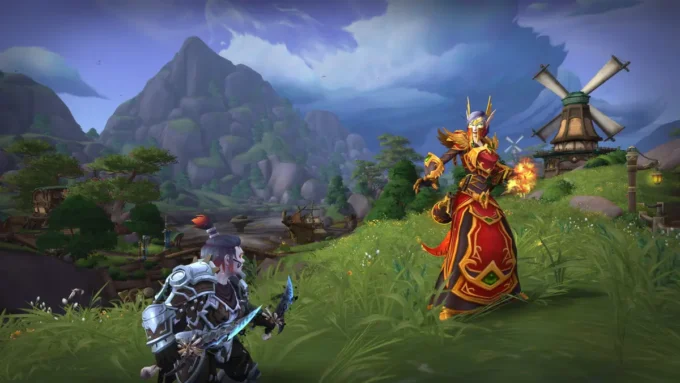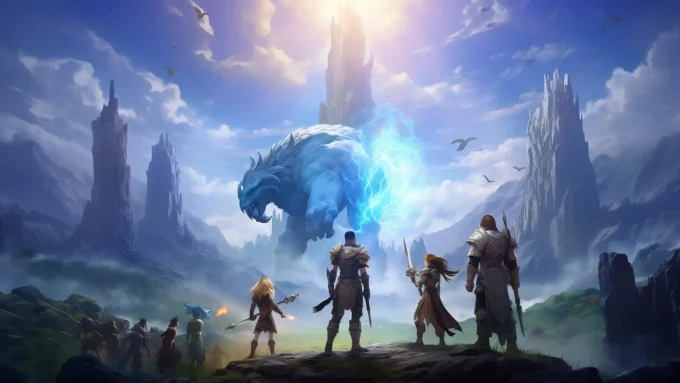
Source: rockpapershotgun.com
As you delve into the realm of online gaming, you embark on a journey that showcases the evolution of MMO and MMORPG games, a fascinating narrative that bridges technology with community engagement.
From the humble beginnings of text-based multiplayer interactions in the 1970s, these online multiplayer games have transformed into expansive, immersive worlds that draw millions into their intricately woven narratives. The evolution of MMO gaming history demonstrates how innovation, player feedback, and market dynamics shape our beloved MMORPG development today.
Origins of MMO Gaming ─ The 1970s and 1980s
The roots of MMO gaming stretch back to the late 1970s, characterized by the introduction of MUDs (Multi-User Dungeons). These pioneering virtual environments enabled players to interact with one another through text, setting a strong precedent for future games.
Early Virtual Worlds and MUDs
The inception of early MMO games began with MUDs, allowing users to explore, create, and shape their adventures collectively. With text-based interactions, players could embark on quests while collaborating with others. This collaborative storytelling became central to the genre, engaging players in a way that traditional single-player experiences could not match.
The Influence of Dungeons & Dragons on MMORPGs
Dungeons & Dragons (D&D) played a crucial role in shaping the early frameworks of multiplayer online games. Its emphasis on role-playing, character development, and strategic cooperation influenced game design significantly.
The mid-1980s heralded the release of the first commercial MMORPG, Island of Kesmai. Following its success, notable titles such as Habitat and Neverwinter Nights emerged, each contributing to the MMO industry growth. These games not only enhanced interactivity but also attracted a community of players who sought rich, immersive experiences.
| Game Title | Year Released | Significance |
| Island of Kesmai | 1985 | First commercial MMORPG, introducing multiplayer gameplay. |
| Habitat | 1986 | Pioneered the use of graphical representation in virtual worlds. |
| Neverwinter Nights | 1991 | Connected players via AOL, significantly expanding the audience. |
Key Milestones in MMORPG Development

Source: servreality.com
The journey of MMORPG development has been shaped by several landmark titles, each contributing to the evolution of gameplay and community engagement. Understanding these milestones provides insight into the significant shifts in MMORPG trends and their lasting impact on the genre.
Rise of Iconic Titles ─ Ultima Online and EverQuest
In the late 1990s, Ultima Online emerged as a groundbreaking title, emphasizing player-driven interactions and community-focused gameplay. It offered vast virtual worlds where individuals could not only embark on quests but also engage in trade and social activities. This approach set a precedent for future MMORPGs.
Impact of World of Warcraft on the Genre
The release of World of Warcraft in 2004 created a seismic shift in MMORPG development. With its user-friendly interface and engaging content, it attracted millions of players globally, becoming a cultural phenomenon. The game’s success popularized the subscription model further and set benchmarks for player engagement through captivating storytelling and expansive worlds.
The Evolution of MMO and MMORPG Games – From Early Days to Modern Hits
The landscape of MMO gaming is constantly evolving, with developers adapting gameplay mechanics and community engagement techniques to meet player expectations. As you explore this realm, consider how these changes have shaped the genre over the years.
Changes in Gameplay Mechanics and Player Engagement
In your journey through MMO gaming history, you might notice a significant transformation in gameplay mechanics. Players now demand immersive experiences and robust interactions, leading to innovations such as:
- Dynamic environments that evolve based on player actions.
- Enhanced progression systems offering personalized gaming paths.
- Deeper narrative elements integrated into quests and character development.
These MMORPG trends reflect a clear shift towards creating more engaging and responsive gaming settings that promote player involvement and satisfaction.
Transition to Free-to-Play Models
The transition to free-to-play models represents a paradigm shift in the MMO industry. This strategy has transformed how players access titles, allowing numerous gamers to step into different worlds without upfront costs. A great resource for exploring this shift is cheapmmoshop.com.
Where players can find affordable in-game items and services, enhancing their gaming experience.
- Greater accessibility for players from various demographics.
- The rise of microtransactions as a revenue source for developers.
- Community-building features that enhance player interactions.
| Game Title | Release Year | Model | Impact on Community |
| Guild Wars | 2005 | Buy-to-Play with no subscription | Encouraged cooperative gameplay and event participation |
| League of Legends | 2009 | Free-to-Play with microtransactions | Developed a massive global esports community |
| Path of Exile | 2013 | Free-to-Play with optional purchases | Fostered a dedicated player base focused on community events |
Conclusion
The evolution of MMO and MMORPG games demonstrates a fascinating journey shaped by technological advancements and the desires of gaming communities. From the early days of text-based adventures, this genre has transformed significantly, giving rise to some of the most beloved franchises in the gaming world today.
By exploring the milestones that have marked MMORPG development, you can appreciate how these innovations not only entertain but also engage players in unique narratives and experiences.



